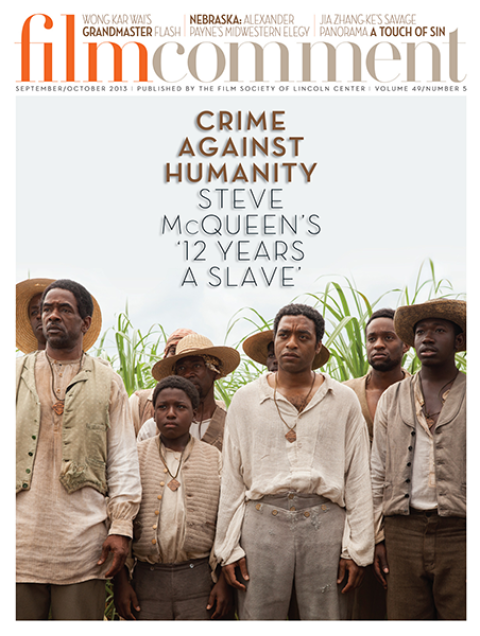Never mind Rita Hayworth: the best and biggest close-ups in Orson Welles’s The Lady from Shanghai belong not to the bottle-blonde once-and-future wife of the director, but to a beady-eyed scoundrel with a gaily cracked voice and a psychopathic gleam in his eye named Glenn Anders—veteran stage actor, occasional Hollywood supporting player, and rogues’ gallery specialist extraordinaire.

The Lady from Shanghai
You may never have seen Anders in anything other than Welles’s 1947 film, but once you’ve seen him there, you never forget him. As the constantly lurking, deliriously smirking George Grisby, law partner to Everett Sloane’s “world’s greatest criminal attorney,” Anders luxuriates in a role that Welles had tailored just for him. Everyone in The Lady from Shanghai has a proposition for Welles’s young Irishman Mike O’Hara; the proposition Grisby makes him is the one that turns the tables (on O’Hara, and the film’s narrative legibility) for good. “I want you to murder . . . me!” Grisby giddily confesses to O’Hara (who’s just finished his “bright, guilty world” soliloquy), high atop the hillsides overlooking Acapulco. Then he seems to plummet from the crazily canted overhead shot (“So long, fella!”) as if dropping through a trapdoor, leaving Welles alone on the cliff’s edge, perplexed and dangling out over the sea.

A nigh-incomprehensible plot is hatched: O’Hara is to fake the murder of Grisby, “shooting” him beneath some docks in Sausalito and explaining to a gaggle of nearby ear-witnesses to the “crime” that he was just out “doing a little tarrrrr-get practice.” Anders’s extra-catty elocutions scintillate in every film he made, but the way Welles encouraged the actor to purr out the word “target” is truly extraordinary, stretching and warping those r’s until his voice sounds for a second like a rusty hinge on a slowly closing screen door. In fact, when next you watch the film, listen to every sound the actor makes: the way he giggles out words he can’t seem to suppress, or audibly gasps for air after tugging on a foamy beer. At the 13-minute mark, pause the film altogether, then slowly advance through the myriad nuances of Anders’s scant moments on screen: peeping at Hayworth through his spyglass, grinning, grimacing, prissily puckering up and blowing a kiss, screwing up his eyes and sticking out his tongue, each mercurial instant a freshly minted mug.

Laughter
Anders was born in Los Angeles in 1889, predating the movies themselves by half a dozen years, and joined the vaudeville circuit while still a teen. In 1919, at age 20, he arrived in New York City, enrolled at Columbia University, and made his Broadway debut in a show called Just Around the Corner. Handsome in a fleet, well-combed sort of way that only just masked his caustic wit and razor-sharp tongue, Anders thrived on stage, appearing in a trio of Pulitzer Prize–winning plays that culminated with Eugene O’Neill’s Strange Interlude in 1928. By then he’d made his movie debut as well, as the smitten and shifty strongman in D.W. Griffith’s W.C. Fields–topping Sally of the Sawdust (25). Anders made only a few films and a handful of television appearances over the next 30-odd years. He was suicidal in the opening scene of the upbeat Laughter (30), a leering wolf in By Your Leave (34), and Rose Hobart’s husband in the Bob Hope nothing Nothing But the Truth (41). He returned to the stage. Welles flew him back to the coast for The Lady from Shanghai with promises of a part that was pure Oscar bait. (He wasn’t even nominated.)

Tarzan's Peril
Then suddenly in 1950, a flurry of big-screen activity found Anders repeatedly sandwiched between some of the top jamokes from the Character Actor Hall of Fame. In Byron Haskin’s wildly entertaining Tarzan’s Peril (51), he’s maimed and left to be devoured by ants (cue cryptic homage to Un Chien Andalou, no kidding) by the ever-sneering George Macready. One scene in Joseph Losey’s re-make of M (51) finds Anders sitting around a table with Hitchcock familiar Norman Lloyd, a raspy-voiced young Raymond Burr, Marnie’s “Mr. Strutt” Martin Gabel, and the leprechaun look-alike Walter Burke, while in the Shelley Winters screwball comedy Behave Yourself! (51), he’s ganged up with no less luminary lugs than Elisha Cook Jr. and Lon Chaney Jr. Would that there were much, much more. Anders retired from screen and stage at the end of the Fifties and settled in sunny Guadalajara, Mexico, ultimately returning to the States to live and die at the Actors Fund Home in Englewood, New Jersey in 1981.








